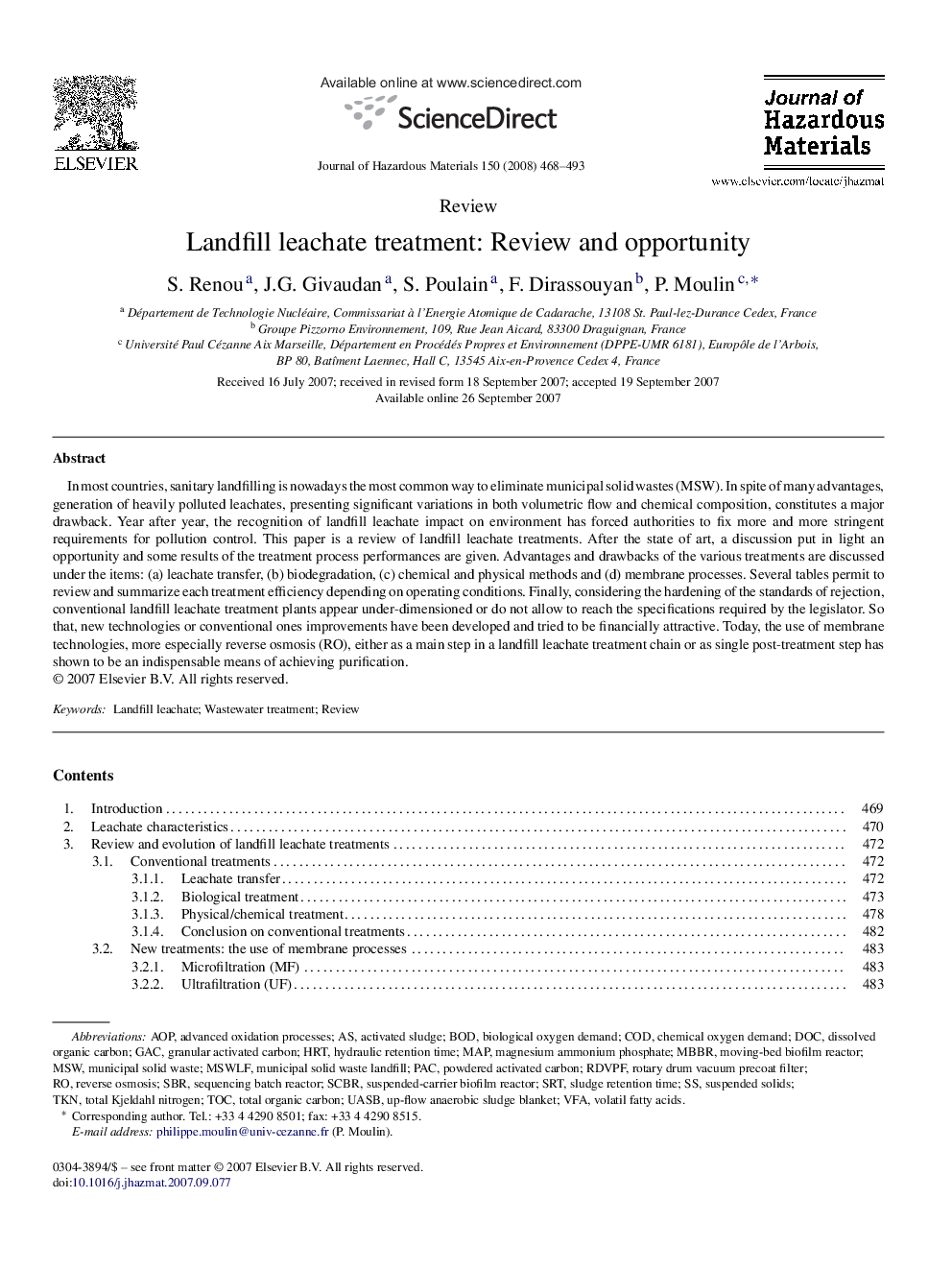| Article ID | Journal | Published Year | Pages | File Type |
|---|---|---|---|---|
| 583660 | Journal of Hazardous Materials | 2008 | 26 Pages |
Abstract
In most countries, sanitary landfilling is nowadays the most common way to eliminate municipal solid wastes (MSW). In spite of many advantages, generation of heavily polluted leachates, presenting significant variations in both volumetric flow and chemical composition, constitutes a major drawback. Year after year, the recognition of landfill leachate impact on environment has forced authorities to fix more and more stringent requirements for pollution control. This paper is a review of landfill leachate treatments. After the state of art, a discussion put in light an opportunity and some results of the treatment process performances are given. Advantages and drawbacks of the various treatments are discussed under the items: (a) leachate transfer, (b) biodegradation, (c) chemical and physical methods and (d) membrane processes. Several tables permit to review and summarize each treatment efficiency depending on operating conditions. Finally, considering the hardening of the standards of rejection, conventional landfill leachate treatment plants appear under-dimensioned or do not allow to reach the specifications required by the legislator. So that, new technologies or conventional ones improvements have been developed and tried to be financially attractive. Today, the use of membrane technologies, more especially reverse osmosis (RO), either as a main step in a landfill leachate treatment chain or as single post-treatment step has shown to be an indispensable means of achieving purification.
Keywords
DOCGACPACUASBHRTAOPBODTKNMSWTOCMBBRsRTSBRVFAMagnesium ammonium phosphateReverse OsmosisWastewater treatmentBiological Oxygen Demandchemical oxygen demandSuspended solidsMunicipal solid waste landfillSequencing batch reactorMoving-bed biofilm reactorMunicipal solid wasteSludge retention timehydraulic retention timeLandfill leachateAdvanced oxidation processesActivated sludgeReviewmapup-flow anaerobic sludge blanketCodDissolved organic carbonPowdered activated carbonGranular activated carbontotal Kjeldahl nitrogenTotal organic carbon
Related Topics
Physical Sciences and Engineering
Chemical Engineering
Chemical Health and Safety
Authors
S. Renou, J.G. Givaudan, S. Poulain, F. Dirassouyan, P. Moulin,
